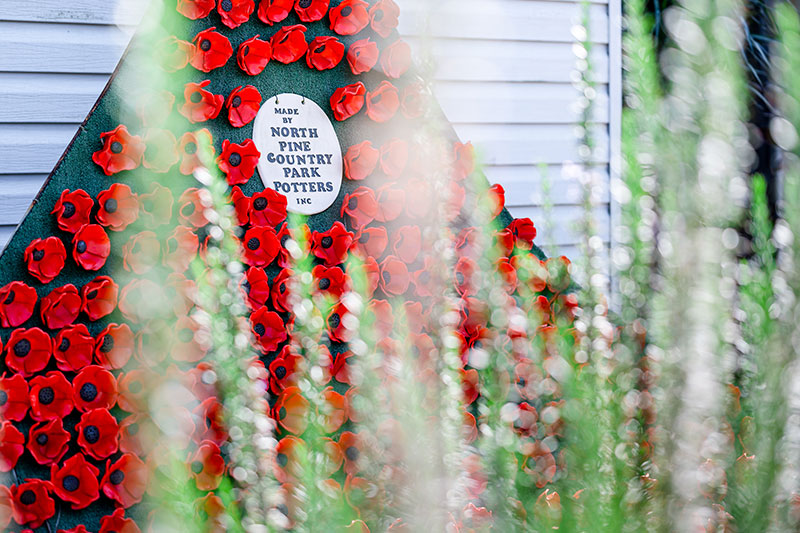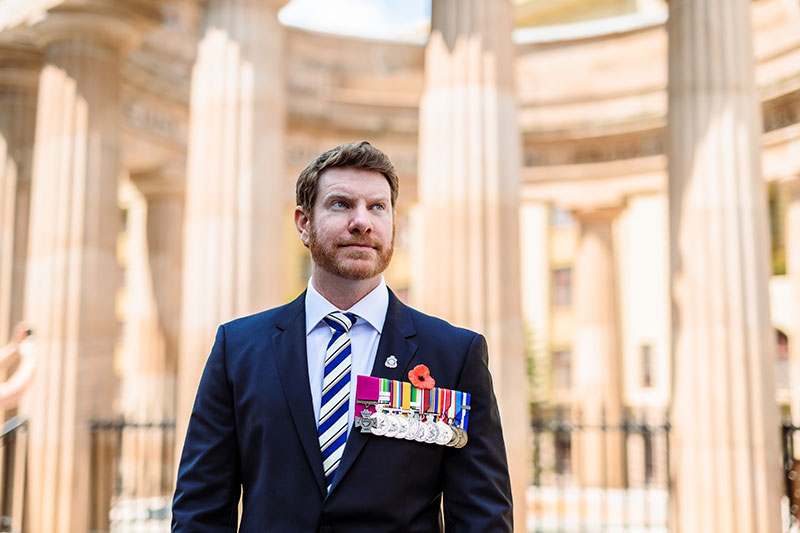
Poppies: From Flanders fields to a symbol of remembrance
14 October 2025- History & commemoration
Since blooming across WWI battlefields, the poppy has endured as a powerful symbol of remembrance.
Pinned to lapels or laid upon headstones and memorials worldwide, poppies remain indelible reminders of those who served and made the ultimate sacrifice.
Why poppies on Remembrance Day?
Poppies have long been associated with sleep, peace, death and – in some traditions – resurrection. But it was during World War I (WWI) that the red poppy became intertwined with remembrance.
On the Western Front during WWI, Flanders poppies bloomed in profusion across the war-torn landscape. While their striking colour became associated with the blood that soaked the battlefields, their appearance in the wake of war promised to those who mourned a lost soldier that their sacrifice was not in vain and their soul would be reborn.

In Flanders Fields
It was a Canadian doctor, Lieutenant-Colonel John McCrae (1872-1918), who penned In Flanders Fields, a poem that resonated with the experience of the men at the front and formally associated poppies with remembrance.
Devastated by the death of a close friend and fellow soldier, McCrae wrote the poem during the second battle of Ypres in 1915, and it was eventually published in Punch magazine. Sadly, McCrae was killed later in the war. However, his words are still recited by millions each year on Remembrance Day:
In Flanders fields the poppies blow
Between the crosses, row on row,
That mark our place; and in the sky
The larks, still bravely singing, fly
Scarce heard amid the guns below.
We are the Dead. Short days ago
We lived, felt dawn, saw sunset glow,
Loved and were loved, and now we lie,
In Flanders fields.
Take up our quarrel with the foe:
To you from failing hands we throw
The torch; be yours to hold it high.
If ye break faith with us who die
We shall not sleep, though poppies grow
In Flanders fields.
Flowers of remembrance
In 1921, the red poppy of Flanders was adopted by the Allied nations as the emblem of sacrifice in the Great War. In Australia, the Returned Soldiers and Sailors Imperial League (which later became the RSL) was responsible for the sale of silk poppies on ‘Poppy Day’.
In the early years, the RSL purchased poppies from Madame Guerin in France, with half the funds raised helping to support French war orphans and the other half supporting the RSL’s charitable activities. Later, in an effort to support returned Australian men, local veterans with disability were employed to produce the poppies.
More than a century later, the red poppy has become an enduring symbol of remembrance and the human cost of war. It continues to be worn on lapels across the globe on 11 November each year. The purple poppy was later adopted to honour animals who have died in service, while the white poppy represents peace.

Daniel Keighran VC wearing a poppy on Remembrance Day 2022.
Where to buy poppies for Remembrance Day
You can usually buy a Remembrance Day poppy through RSL Sub Branches. Poppy merchandise is also available at Military Shop.
You can also support RSL Australia's Poppy Appeal by planting a poppy in the virtual Remembrance Garden. Your donation supports veterans and their families, and you can dedicate your poppy in someone’s name.
This Remembrance Day (11 November), join millions worldwide in honouring those who died in service to their country.
Attend an RSL Sub Branch service, observe a minute’s silence at 11am or donate to the Poppy Appeal, and help keep our service people’s legacy alive.
Lest we forget.
